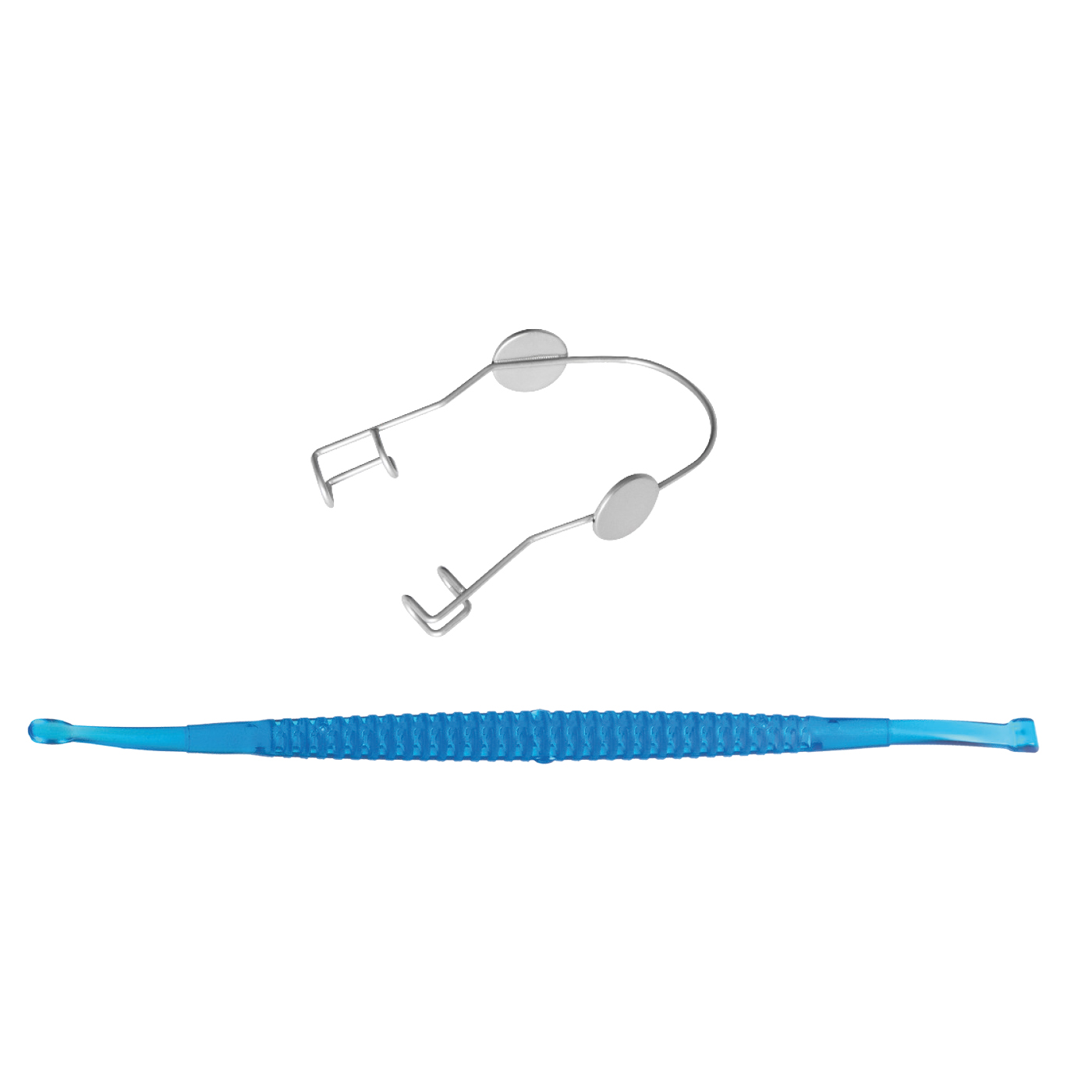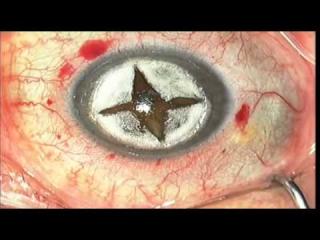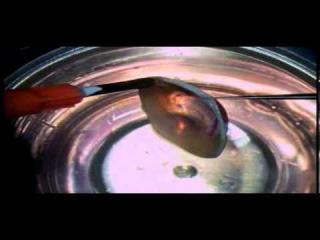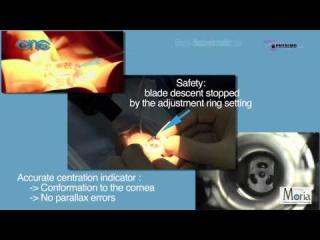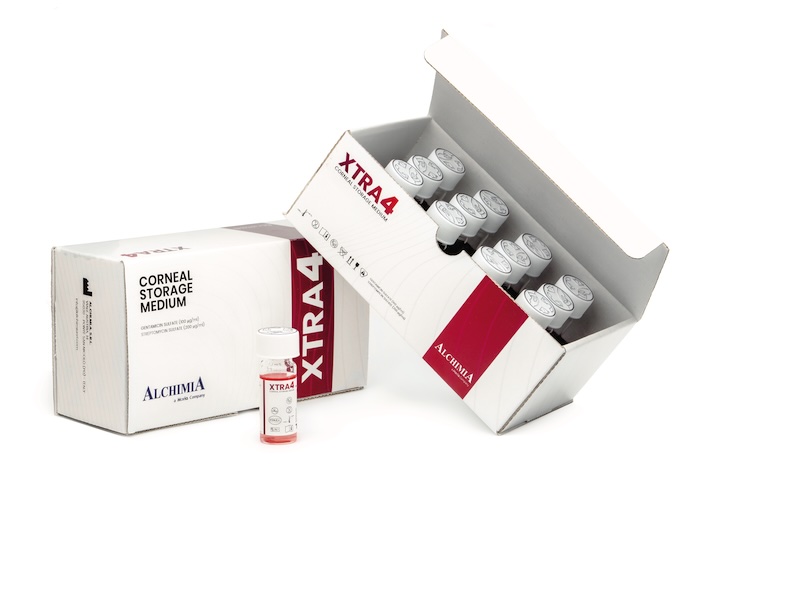What is retinopathy of prematurity?
Retinopathy of prematurity is an eye condition that affects the blood vessels of premature infant’s retina. To function normally, the retina must be supplied with essential elements such as oxygen and nutrients through blood vessels.
When a child is born before term, the growth of these blood vessels is not completed yet. They continue to grow even after birth. In some children, blood vessels abnormalities can form on the retina. They can lead to retinal detachment as well as some other complications that may affect the child’s vision. Only a serious screening can help diagnose retinopathy of prematurity (ROP) in a child [2].
[2] Retinopathy of Prematurity - National Eye Institute (En ligne) - https://www.nei.nih.gov/learn-about-eye-health/eye-conditions-and-diseases/retinopathy-prematurity
How is retinopathy of prematurity diagnosed?
All the babies born before 30 weeks of pregnancy go through a medical examination for retinopathy of prematurity.
ROP diagnostic: the procedure
In order to diagnose the disease, ROP test for newborn are carried out by an ophthalmologist. To do so, the doctor uses drops that dilate the pupils in order to get a better view of the inside of each eye. If abnormal blood vessels are detected, regular examinations will be conducted by the ophthalmologist.
Retinopathy of prematurity tests : in which frequency?
Depending on some specific factors [4], eye tests will be planned every week or every two weeks. Indeed, this depends on the location of the blood vessels, their rate of development and the severity of their spread. Although most ROP cases do heal by themselves, some of the babies will need medical or surgical treatment that reverses the progression of retinopathy of prematurity. This is done in order to avoid any risk of blindness [5].
[4] Retinopathy of Prematurity - American Association for Pediatric Ophthalmology and Strabismus - https://aapos.org/glossary/retinopathy-of-prematurity
[5] JONATHAN SEARS MD - Diagnosis of Retinopathy of Prematurity - https://www.sciencedirect.com/topics/medicine-and-dentistry/diagnosis-of-retinopathy-of-prematurity
What are the stages of ROP ?
Ophthalmologists do assess the severity of retinopathy of prematurity by an examination of the involved area as well as the stage of the illness.
The stages of retinopathy of prematurity are the following [7] :
- Stage 1 : a phase to watch
This stage is characterized by a slight development of abnormal blood vessels. Although at this stage babies do not need any medical or surgical treatment, the condition must still be watched carefully.
- Stage 2 : a careful attention to retinal blood vessels is needed
The development of abnormal blood vessels is moderate. ROP might still resolve spontaneously at this stage, but there is a risk of progression to stage 3.
- Stage 3 : an advanced stage of ROP
In stage 3, a severe development of abnormal blood vessels can be observed. Indeed, new blood vessels start to spread into the vitreous body which is the clear gel that fills the eye. Although ROP can heal spontaneously at this stage, the risks of retinal detachment are higher than at stage 1 and 2.
- Stage 4: when treatment for retinopathy of prematurity becomes necessary
Stage 4 is characterized by a partial retinal detachment due to the abnormal blood vessels and scar tissue pulling on the retina.
- Stage 5: when ROP puts vision at risk
At this stage, the retina is completely detached which can seriously affect the eyes’ vision and lead to blindness.
[7] ROP - National Eye Institute - https://www.nei.nih.gov/learn-about-eye-health/eye-conditions-and-diseases/retinopathy-prematurity
When do you treat retinopathy of prematurity?
All the babies born before 30 weeks go through a medical exam that helps diagnose ROP. If after an eye screening ROP is detected at stage 3, stage 4 or stage 5, the affected eye must be treated quickly in order to avoid further damage [8].
[8] Treatment for ROP - NHS - -https://mft.nhs.uk/app/uploads/sites/4/2018/04/ROP - Treatment-February-2018.pdf
What are the treatments for retinopathy of prematurity?
Once the stage of ROP is defined, the treatment is chosen by the ophthalmologist. According to the stage and the severity of the condition, one of the following options will be chosen [9] :
Nowadays, advanced ROP is treated with lasers. With this method, the area around the edge of the retina is coagulate in order to preserve sight in the main part of the visual field. It is performed under general anesthesia. To allow more precision during the intervention and to, thus, ensure a secured procedure to the infant, fiber lasers are widely used in ophthalmology.
- Cryotherapy as a treatment for retinopathy of prematurity
Cryotherapy was the first treatment for ROP before lasers were marketed. This technique lies on the freezing of a definite part of the eye that goes beyond the edges of the retina. Both cryotherapy and laser therapy have the same goal : to preserve sight in the main part of the visual field. It is performed under general anesthesia. Besides laser therapy and cryotherapy, research on medical treatments of ROP is ongoing. It lies on anti-vascular endothelial growth factor drugs that would help treat the abnormal growth and spread of blood vessels. If these treatments are approved, they would be a great alternative to surgery and laser therapy. Indeed, they would help avoid the risks involved in general anesthesia for babies. If retinopathy of prematurity causes partial or complete retinal detachment, surgery is sometimes done to reattach the retina and prevent further vision loss.
MORIA INSTRUMENTS:
[9] ROP Diagnosis and Treatment - American Academy of Ophthalmology (En ligne) - https://www.aao.org/eye-health/diseases/retinopathy-prematurity-diagnosis
What are the chances of being cured ?
Most retinopathy of prematurity treatments are successful. One thing to remember is that the disease often cures by itself and not all premature babies develop severe ROP.[10]
[10] What is ROP? - The Royal Children’s Hospital Melbourne - https://www.rch.org.au/ophthal/patient_information/What_is_ROP/






